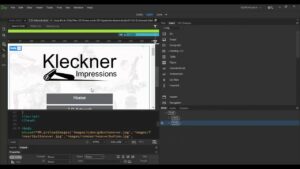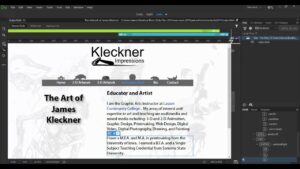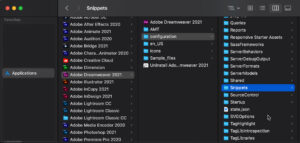A Comprehensive Guide to Creating a Webpage Using HTML

Introduction:
In the vast landscape of web development, HTML (Hypertext Markup Language) serves as the foundational building block for crafting webpages. Whether you’re a seasoned developer or a complete novice, understanding how to create a webpage using HTML is a fundamental skill. This comprehensive guide aims to take you through the process step by step, covering essential HTML tags, structure, and best practices to help you design and structure a webpage with clarity and precision.
I. Understanding HTML:
A. What is HTML?
- Definition and purpose of HTML
- Role of HTML in web development
- Evolution of HTML versions (HTML5, HTML4, etc.)
B. HTML Basics:
- Syntax and structure of HTML documents
- The concept of HTML elements and tags
- Nesting and hierarchy in HTML code
II. Setting Up Your Environment:
A. Text Editors:
- Popular text editors for HTML (Sublime Text, Visual Studio Code, Atom, etc.)
- Features and advantages of using specific text editors
- Configuring your chosen text editor for HTML development
B. Integrated Development Environments (IDEs):
- Overview of HTML-friendly IDEs (Brackets, Adobe Dreamweaver, etc.)
- Benefits and drawbacks of using an IDE
- Choosing the right environment for your needs
III. Creating the HTML Document:
A. Document Structure:
- Basic structure of an HTML document
- The role of the <!DOCTYPE> declaration
- Opening and closing HTML tags
B. Head Section:
- Meta tags for defining character set and viewport
- Title tag for specifying the webpage title
- Linking external stylesheets and scripts in the head
C. Body Section:
- Main content area within the <body> tag
- Implementing headings (<h1> to <h6>) for structuring content
- Creating paragraphs with the <p> tag
IV. HTML Elements and Tags:
A. Text Formatting:
- Bold and italic text with <strong> and <em> tags
- Underlining and strikethrough with <u> and <s> tags
- Creating line breaks with <br> tag
B. Lists:
- Ordered lists (<ol>) and unordered lists (<ul>)
- List items (<li>) within ordered and unordered lists
- Nesting lists for hierarchical structures
C. Links and Anchors:
- Creating hyperlinks with the <a> tag
- Specifying link destinations using the href attribute
- Adding target attributes for opening links in new windows or tabs
D. Images:
- Embedding images with the <img> tag
- Specifying image sources and alternative text
- Adjusting image size and alignment
E. Forms and Input Elements:
- Building forms with the <form> tag
- Input elements for text, password, radio buttons, checkboxes, etc.
- Submit and reset buttons for form interaction
V. Structural Elements:
A. Divisions and Sections:
- The role of <div> tags for dividing content
- Identifying sections with the <section> tag
- Creating article-specific content with the <article> tag
B. Headings and Navigation:
- Using <header> and <footer> tags for page headers and footers
- Implementing navigation menus with the <nav> tag
- The significance of semantic HTML for accessibility and SEO
C. Grouping Content:
- The <span> tag for grouping inline elements
- Utilizing <fieldset> and <legend> for grouping form elements
- The <figure> and <figcaption> tags for associating captions with images
VI. HTML Attributes:
A. Class and ID Attributes:
- The role of classes for styling and JavaScript interactions
- Identifying unique elements with the ID attribute
- Implementing classes and IDs in HTML tags
B. Style Attribute:
- Inline styling with the style attribute
- Specifying CSS properties directly within HTML tags
- Pros and cons of using inline styles
C. Data Attributes:
- Introducing data attributes with the data-* attribute
- Storing custom data in HTML elements
- Accessing data attributes with JavaScript
VII. Best Practices for HTML Coding:
A. Semantic HTML:
- The importance of semantic elements for accessibility
- Using semantic tags like <article>, <section>, <nav>, and <aside>
- Enhancing search engine optimization (SEO) with semantic HTML
B. Consistent Indentation and Formatting:
- Ensuring clean and readable code
- Proper indentation practices for nested elements
- Using consistent formatting throughout the HTML document
C. Comments and Documentation:
- Inserting comments with <!– and –>
- Providing documentation for complex code sections
- The role of comments in collaboration and code maintenance
VIII. Testing and Debugging:
A. Browser Compatibility:
- Cross-browser testing for compatibility
- Identifying and addressing browser-specific issues
- Utilizing browser developer tools for debugging
B. HTML Validation:
- Online HTML validation tools
- Fixing common validation errors
- The impact of valid HTML on website performance
IX. Advanced HTML Concepts:
A. Multimedia Embedding:
- Embedding videos with the <video> tag
- Audio embedding using the <audio> tag
- External content embedding with iframes
B. Responsive Design:
- Designing responsive webpages with media queries
- Utilizing viewport meta tags for mobile optimization
- Creating flexible layouts with percentage-based widths
C. HTML5 Features:
- Introduction to HTML5 semantic elements
- New input types (date, email, tel, etc.) for enhanced form functionality
- The role of the <canvas> tag for drawing graphics
X. Additional Resources and Further Learning:
A. Online HTML Documentation:
- The official W3C HTML documentation
- MDN Web Docs for comprehensive HTML resources
- Utilizing online forums and communities for problem-solving
B. HTML Courses and Tutorials:
- Online platforms offering HTML courses (Codecademy, Udemy, Coursera, etc.)
- Interactive tutorials for hands-on learning
- Incorporating real-world projects for practical experience
C. Books on HTML and Web Development:
- Recommended books for mastering HTML
- Publications covering HTML5 advancements and best practices
- Building a comprehensive library for ongoing reference
Conclusion:
Creating a webpage using HTML is a fundamental skill that opens the door to the vast realm of web development. This comprehensive guide has covered the basics, advanced concepts, and best practices to empower you in building clear, efficient, and semantically rich HTML documents. Whether you’re a beginner or looking to enhance your skills, the journey from understanding HTML fundamentals to mastering advanced techniques is a rewarding adventure that will equip you to create impactful and dynamic webpages. With continuous learning and exploration, you’ll find yourself confidently navigating the ever-evolving landscape of web development. Happy coding!




